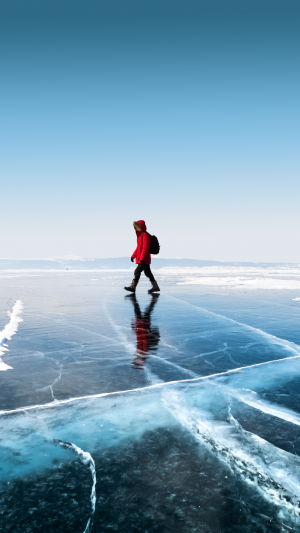The weather is getting colder and colder, and many rivers and lakes are iced over.
Many people began to try to walk on the ice.
It is important to note that ice sports are very prone to accidents, as the temperature has risen from time to time, some ice is not hard enough, risky walk on ice.
1. Choose a place where the ice is strong enough and thick enough to play on.
2. The ice in the deep water area is often not as thick as the near-shore area, and accidents are very likely to happen when there are many people, so try to choose the near-shore area to play.
3. found someone fell into the ice cave, do not rashly save them, should shout to the older experienced people to help.
Self-rescue guide for ice falling into the water.
1. Calm
You need to stay calm, not rush to breathe, and just fall into the water, the body will react strongly to make you nervous and want to breathe heavily, be sure to overcome this reaction.
This physical reaction will gradually fade in 1 to 3 minutes, before losing consciousness, you have 15 to 45 minutes to get out of danger.
Make an effort to steady your breathing.
While shouting for help, climb the ice edge to avoid sinking your body into the ice water.
2. Look for a weight-bearing ice surface
Use both elbows to try to find the ice surface that can bear the weight, if the ice is thin, then break the thin ice in front of the body, until close to the thicker ice, and then climb up.
Otherwise, you may keep climbing up and keep falling into the water, wasting energy.
3. Body near the edge of the thickest part of the ice, hands amble on the ice, feet hit the water, so that the lower half of the body floats, the whole body into a straight line.
Then crawl with the elbows, so that the whole body gradually leaves the water, feet on the water quickly climb up the ice.
Be careful to use both elbows rather than hands to support the body, and try to increase the contact area with the ice, climbing on the ice should not be too violent action.
4. If you the sudden cramps in the water, and can not be shore, immediately call for help.
If no one is around, you can take a deep breath to dive into the water, and straighten the cramped leg, using your hands to pull the toes up.
5. Move smoothly toward the shore. Do not stand immediately, but roll on the ice like a seal, lower your center of gravity and crawl to the shore and then stand again to prevent the ice from breaking again due to excessive weight.
6. Restore body temperature.
If your hands and feet are frozen after going ashore, you should return to a warm environment so that the temperature of the frozen part slowly rises, never bake on the fire or soak in hot water, which will form frostbite or even ulcers.
The most effective way is to rub your hands together to increase the temperature by friction and promote blood circulation in your body.





